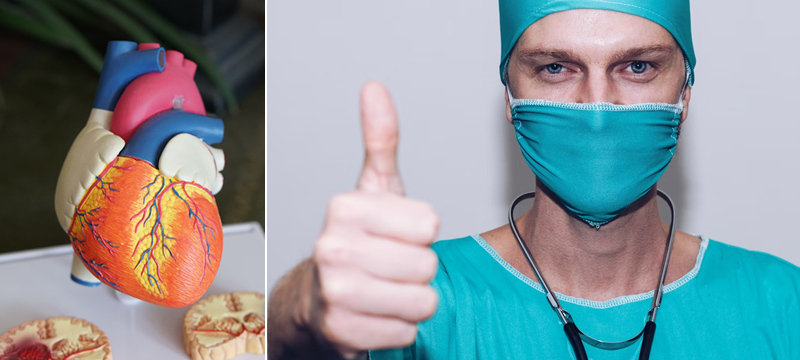How Does a Pediatric Cardiologist Diagnose Heart Conditions in Children
At Spandan Heart Care, we understand the importance of early detection and comprehensive care for children with heart conditions. Led by our expert child cardiologist, we are committed to providing the best heart health services possible. Let’s delve into how pediatric cardiologists diagnose and treat heart conditions in children, ensuring their well-being and long-term health.
Understanding Pediatric Heart Health
Pediatric cardiology specializes in diagnosing and treating heart conditions in infants, children, and adolescents. These conditions can range from congenital heart defects present at birth to acquired heart problems later in childhood. Identifying these issues early is crucial for effective management and improving outcomes.
When to See a Pediatric Cardiologist
Parents should consider consulting a pediatric cardiologist if their child exhibits symptoms such as:
-
Blueish skin color (cyanosis)
-
Rapid breathing
-
Poor feeding or growth
-
Irregular heartbeat
-
Exercise intolerance
These symptoms may suggest underlying heart issues that require specialized evaluation and care.
Diagnostic Tools and Procedures
1. Physical Examination
Pediatric cardiologists begin with a comprehensive physical examination, listening carefully to the heart and lungs for murmurs, abnormal rhythms, or other signs of heart issues.
2. Electrocardiogram (ECG or EKG)
An ECG records the electrical activity of the heart. It helps detect irregularities in heart rhythm (arrhythmias) and patterns that may indicate structural abnormalities.
3. Echocardiography
Echocardiography uses sound waves (ultrasound) to create detailed images of the heart’s structure and function. It is invaluable for diagnosing congenital heart defects, evaluating heart valves, and assessing heart function.
4. Holter Monitor and Event Recorder
These devices monitor the heart’s electrical activity over time, providing information about irregular rhythms that may not occur during a brief examination.
5. Cardiac Catheterization
In some cases, cardiac catheterization may be necessary to obtain more detailed information about the heart’s structure and function, or to perform corrective procedures.
6. MRI and CT Scans
Advanced imaging techniques like MRI (Magnetic Resonance Imaging) and CT (Computed Tomography) scans offer precise views of the heart and blood vessels, aiding in complex diagnoses and treatment planning.
What Are The Treatment Options Available for Congenital Heart Defects in Children?
Treatment Approaches
Treatment options for congenital heart defects in children vary depending on the specific defect and its severity. Here’s an overview of common treatment approaches:
-
Monitoring and Observation: Some minor congenital heart defects may not require immediate treatment but need regular monitoring by a pediatric cardiologist to assess any changes over time.
-
Medications: Certain medications can help manage symptoms associated with congenital heart defects, such as heart failure, irregular heart rhythms, or high blood pressure in the lungs.
-
Interventional Procedures:
-
Cardiac Catheterization: This minimally invasive procedure involves threading a thin tube (catheter) through a blood vessel to the heart to repair defects, open narrowed arteries or valves, or close abnormal openings (like septal defects).
-
Balloon Angioplasty: In some cases, a balloon-tipped catheter may be used to widen narrowed heart valves or blood vessels.
-
Closure Devices: Devices can be inserted through catheters to close holes in the heart (like atrial septal defects or patent ductus arteriosus).
-
-
Surgical Repair: For more complex congenital heart defects that cannot be treated with catheter-based interventions, open-heart surgery may be necessary. This could involve repairing heart defects, reconstructing heart valves or blood vessels, or performing corrective procedures like the Fontan procedure for single ventricle defects.
-
Heart Transplant: In severe cases where the heart defect is too complex to repair or when the heart function is severely compromised, a heart transplant may be considered.
-
Lifestyle and Supportive Care: Children with congenital heart defects may benefit from lifestyle modifications such as dietary changes, regular exercise as recommended by their cardiologist, and support services to help manage their condition and improve quality of life.
The choice of treatment depends on factors such as the type and severity of the defect, the child’s age and overall health, and the presence of any associated conditions. It’s important for families to work closely with a pediatric cardiologist to develop a personalized treatment plan that addresses their child’s specific needs and maximizes their long-term health outcomes.
Collaborative Care and Support
Pediatric cardiologists work closely with other healthcare professionals, including pediatricians, pediatric cardiac surgeons, nurses, and nutritionists, to provide comprehensive and compassionate care. This multidisciplinary approach ensures that every aspect of a child’s heart health is addressed effectively.
Conclusion
Early detection and intervention by a pediatric cardiologist are crucial for managing heart conditions in children. At Spandan Heart Care, our dedicated team is committed to utilizing advanced diagnostic tools and personalized treatment plans to ensure the best possible outcomes for our young patients.
If you have concerns about your child’s heart health or notice any symptoms, don’t hesitate to reach out to us. Together, we can safeguard your child’s heart and support their overall well-being .




